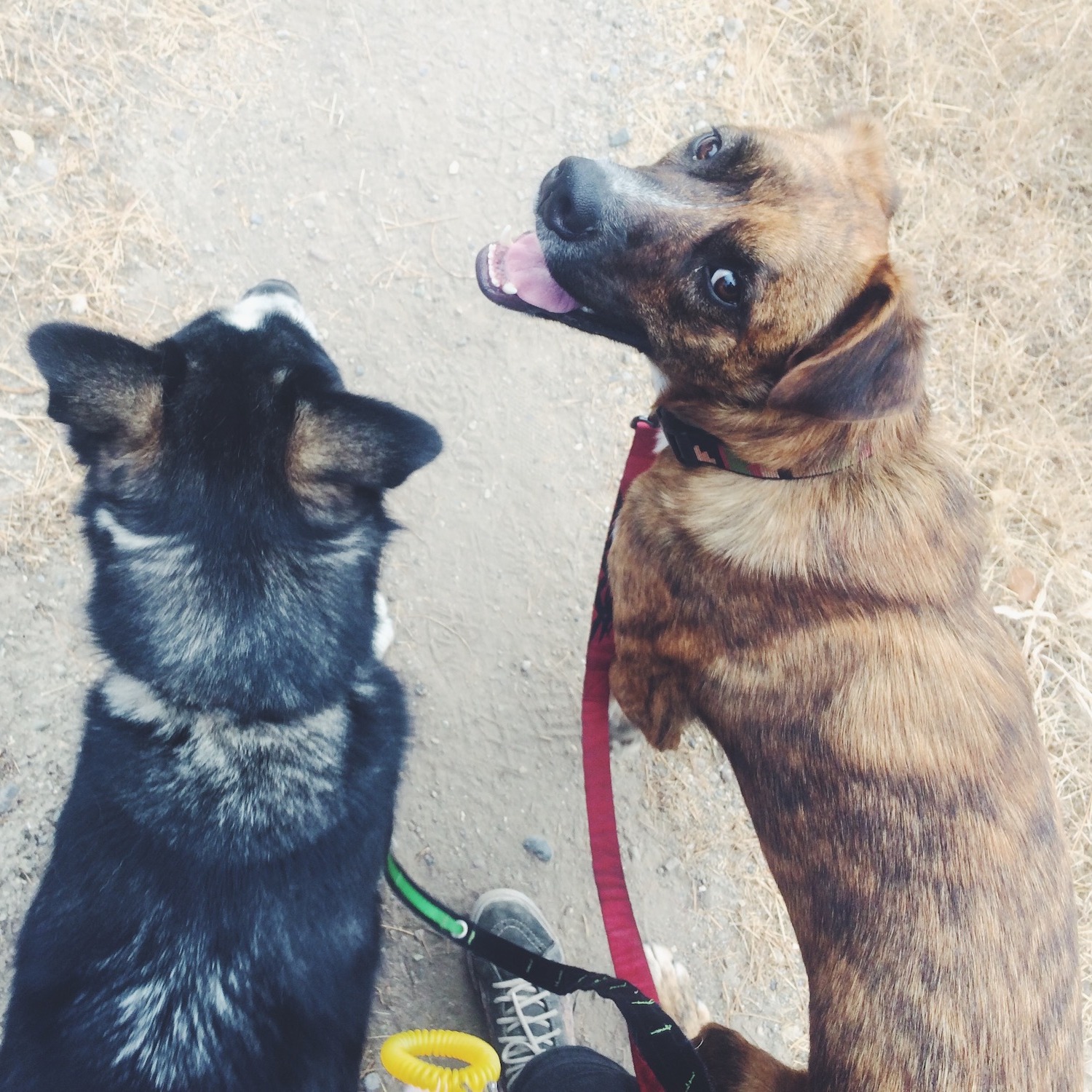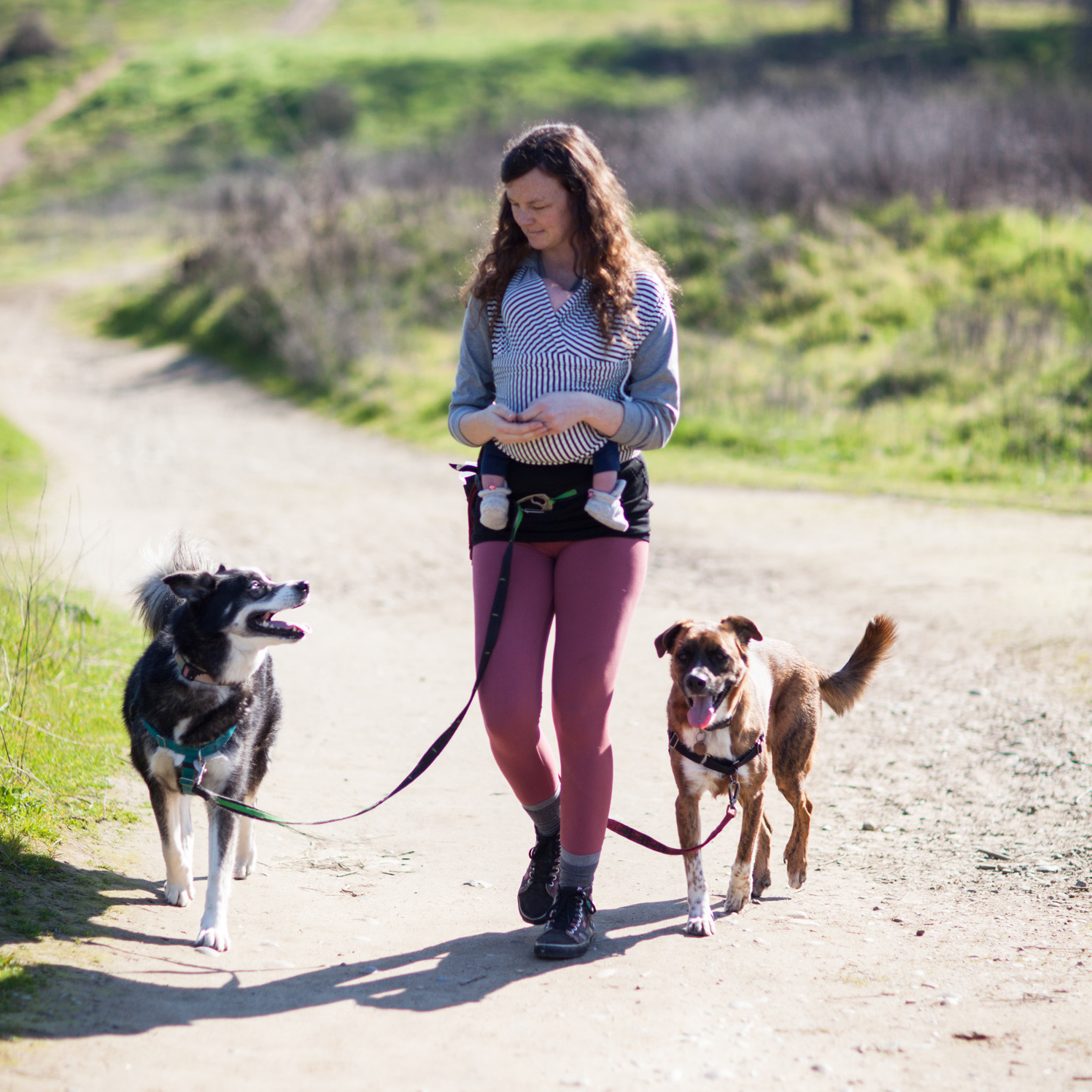You've worked hard to teach your dog loose leash walking skills in a distraction-free area. Now it's time to add some distractions and take those skills out into the real world.
No matter whether you're a pet parent or a professional dog trainer, if your dog pulls, starting in a distraction-free area is the perfect way to start leash training your dog to walk with a relaxed, loose leash (standard leash, NOT a retractable leash) by your side. So yay for you and your dog! You're on your way to the good behavior you dream of with your dog happily walking alongside you for all your dog walks!
Here's how to leash train your dog for real life
Your Dog's Plan
Stop! Don't read this long article. Instead, get everything you need to know, including all advice on Leash Manners, in a customizable step-by-step plan for your dog created by our community of certified trainers and nutritionists.
Now that your dog walks consistently with a loose leash inside your house, how do you teach your dog to walk alongside you amid distractions outside? If you haven't already, start by checking out my previous guide to learn the fundamentals of leash training from loose leash walking tips to the right equipment you'll need - i.e. your dog's collar, harness, recommended leashes, leash length, and type of treats for positive reinforcement.
After you've reviewed the basics of loose leash walking and have the right dog training tools, let's take your leash-trained dog outside and start learning how to teach your dog not to pull on leash even with distractions around you.
Here are 3 steps to train your dog not to pull on leash
Step 1: Begin practicing your leash manners dog training by opening the door to your backyard
Try this
Start walking your dog inside. Have your dog walk on leash past the door to your backyard a few times as you do “laps” with your dog's leash loose and your good dog not pulling you around the house. You may notice you need to raise your rate of reinforcement (click and reward frequently with yummy treats) as you approach the door, since you may find your dog starts to pull in anticipation of getting outside.
Continue rewarding at this level until you are able to reduce your rate of reinforcement and walk easily by the door without your dog pulling.
Step 2: Cue your dog to walk through your door into the backyard
Try this
Actually walking out the door usually increases the difficulty and pulling level, so offer treats galore at first (a high-value tasty treat is your best choice here). You may want to start walking out a few paces and then circle back inside, slowly increasing your path's distance until you are spending more and more time walking in the yard.
Leash Manners
Interested in Leash Manners? Follow topics you're interested in to customize your dog’s step-by-step plan so it's most helpful and tailored to your dog when you're ready to get started.
Step 3: Change it up for your dog and open your front door
Try this
For most dogs, the front door is even more exciting than the door that leads to a usually more accessible backyard. You will want to start training your dog at the front door by repeating steps 1 and 2, and take your time.
Note: If the first step above proves challenging and your dog pulls on leash, take a step back and get creative with smaller distractions that you can phase in as you practice indoors.
Give me an example
Turn on the TV or radio for a noise distraction, have your family stand along your “path,” having them walk around as you practice (they can gradually become more distracting by changing the motions they are making to become more exciting or eye-catching, and can add in making noises by talking, singing, clapping, etc), place favorite toys on the floor and practice walking past or over them. You can even involve other dogs or cats in your household - for example two family members each walking one dog around the room and periodically passing one another.

Don't forget to enjoy your walks with your dog! Leash training can be hard and mental draining so take breaks when you both need it and have some fun on your walk.
Some final tips on how to leash train a dog (from a professional trainer-eye view):
Tip 1: Keep leash training sessions short
Spending an entire hour practicing leash manners is grueling and you’ll probably notice your dog's focus fading and the loose leash behavior going in the opposite direction after a while. Stay alert to how your pup is feeling, and train your dog for short periods, more often!
Tip 2: Break up leash training sessions with fun high energy play
For your dog, walking at a rather unnatural human pace is pretty hard work and a lot of mental stimulation. Throwing in some free time for getting silly like playing chase if you have a fenced yard where your dog can run wild off leash is a great outlet. Or take a sniff break and let your pup smell everything. Let your dog be totally dog!
Tip 3: Experiment with different reinforcers (treats) to stop your dog from pulling
At this point, as you expand the difficulty level of your leash training (especially working outside), you may want to break out the higher value treats. For many dogs, things like cheese and deli meat are popular choices for a reward. And as always, praise profusely!
Your Dog's Plan
Stop! Don't read this long article. Instead, get everything you need to know, including all advice on Leash Manners, in a customizable step-by-step plan for your dog created by our community of certified trainers and nutritionists.
Tip 4: If possible, put a pause on regular dog walks for a bit while you practice your new behavior
A daily dog walk is certainly one form of exercise and enrichment but there are many other activities that are just as effective and will be less likely to confuse your dog at this early point while you're solidifying your loose leash training. Try some off-leash play in your backyard, short car rides with plenty of stops to sniff, or playing games like tug.
When you are ready to resume your regular dog walks, go back to basics by starting with very short distances and gradually lengthening the route as your dog's loose leash walking improves.
Walking your dog should be a calm and enjoyable experience for both of you. With patience and consistency, loose leash walking can be accomplished by nearly any dog. Just remember to keep things fun, positive, and rewarding!
Try this
Try mixing it up by playing games in conjunction with your leash training instead of going on a regular dog walk. You’ll likely find that training is tiring enough to replace the walk.
If you live somewhere where potty walks are a necessity, then help your dog distinguish between the potty walk and the training walk by using different equipment (different leashes, harness/collar, etc). Dogs are excellent at distinguishing between subtle environmental cues that indicate which behavior is appropriate.
Tip 5: Practice your dog not pulling on leash in your neighborhood before going to new environments
Because dogs can be so specific and perceptive of environmental changes, you’ll likely find that as you practice your walking skills in your neighborhood, your dog will get good at walking politely in your neighborhood. But when you step forward and go for a walk downtown or hit a new trail, if those skills disappear somewhat and your dog starts pulling on the leash again - don’t despair! This is normal, and just means you need to go back to basics and begin teaching him/her that the same rules apply in these new places, too.
Remember, the goal is for your dog to walk calmly and politely on a loose leash by your side no matter where you are or what’s going on around you. With time, patience, and consistency, you can make this happen!
Try this
If your dog is ready to practice loose leash walking in a new neighborhood, go back to basics. Revisit the original steps in my loose leash training guide. Don't expect your dog to be a loose leash pro somewhere new just because he/she was in your backyard.
Walking
Need more advice? Browse all guides in the Walking Channel on topics like Leash Manners - created by our community of certified experts for you and your dog.
Next up in the Walking Channel on Dogly
Now that your dog is walking nicely by your side in your neighborhood, you’re ready to start trying your dog's loose leash walking skills in a new environment. Continue on in the Walking Channel if you'd like to ask a question in the Community discussion or start any of the other step-by-step guides.
And if you ever need more personalized training help, please reach out!

